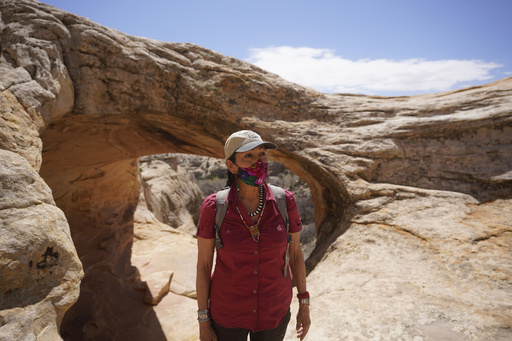In a recent development related to the expansion of U.S. energy production, federal officials are set to reassess the boundaries of national monuments that were designated under previous administrations to protect significant landscapes and cultural heritage. This initiative, outlined in an order issued on Monday by the newly appointed Interior Secretary Doug Burgum, has raised concerns among conservation organizations fearing that the Trump administration might alter or diminish the protections of monuments established by former presidents, including Democratic President Joe Biden.
Burgum has instructed agency officials to present their strategies by February 18 on how they plan to implement this directive. The examination primarily targets monuments like Bears Ears and Grand Staircase-Escalante in Utah, both of which faced opposition from state authorities during their establishment. Notably, Grand Staircase-Escalante is known for its substantial coal reserves, whereas the Bears Ears area contains uranium deposits.
During his first term, Trump reduced the extent of these two monuments, describing the original designations as a “massive land grab.” Additionally, he removed fishing constraints within a large marine monument located off the coast of New England. However, those protections were reinstated by Biden later on.
The authority of Trump to modify the boundaries of existing monuments remains uncertain and is presently the subject of ongoing legal debates. A coalition of advocates for national monuments has expressed their discontent, stating that this move is a “sneaky, unpatriotic attack” on the nation’s cherished public lands, which include national parks and monuments. This group comprises business owners, environmental organizations, and supporters of outdoor recreation.
The advocates highlighted that national monuments play a critical role in safeguarding public water and wildlife, promoting outdoor recreation, protecting trails, and preserving culturally significant sites. The Utah monuments in question cover over 3.2 million acres, almost equivalent to the entire state of Connecticut. They were established under the Antiquities Act, which was enacted in 1906 to enable presidents to protect significant historic, cultural, or geographical sites.
The Supreme Court has upheld the president’s power to designate national monuments, a practice adopted by both political parties over the years, including Trump himself. While the Interior Department has refrained from specifying which monuments might be targeted in this review, Burgum referenced the federal laws linked to the 1906 legislation in his order. Meanwhile, Utah’s Republican Governor Spencer Cox has voiced support for further shrinking the Bears Ears monument, noting that Burgum’s leadership appointment was a strong choice by Trump.
This order is part of a broader series of initiatives aimed at energy management that Burgum has begun as he takes charge of the Interior Department, which oversees over 500 million acres of public lands, including upwards of 400 national parks and 560 wildlife refuges. Burgum has also sought to reverse various regulatory restrictions on the oil, coal, and gas sectors that were implemented during Biden’s tenure.
In a statement, Burgum articulated a commitment to collaboratively unlock the country’s energy potential and economic development, aiming to make life more affordable for American families while showcasing the nation’s natural resources and innovation capabilities. The backdrop of these actions is the Trump administration’s assertion of a “national energy emergency,” even as domestic oil production hits unprecedented levels. The oil industry has lauded Burgum’s decrees, with Erik Milito, President of the National Ocean Industries Association, declaring that “American energy leadership is back.”
However, this declaration of an energy emergency has faced criticism from Democratic representatives and environmental advocates. Aaron Weiss from the Center for Western Priorities articulated that if the administration attempts to assert an energy emergency that overrides the Antiquities Act, they would be met with skepticism in court. The legal challenges regarding Trump’s previous reductions to monument protections were still underway when Biden reinstated them, and have yet to be resolved.
The monuments currently under assessment are favored by local communities and businesses that have long advocated for their conservation. Furthermore, Biden, in recent years, has established national monuments in Nevada and Arizona that are significant to the cultural narratives of local tribes.
Republican Governor Joe Lombardo of Nevada expressed frustration at the time, claiming that the Biden administration had excluded his government from consultations, effectively hindering clean energy projects and other developments in the state.



